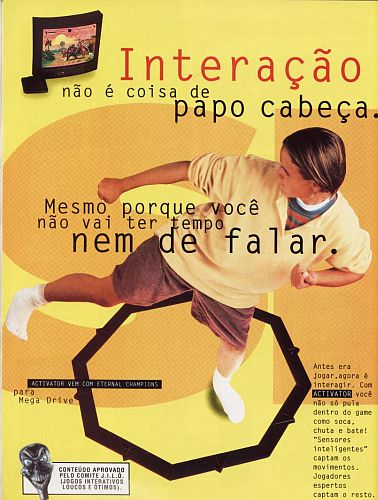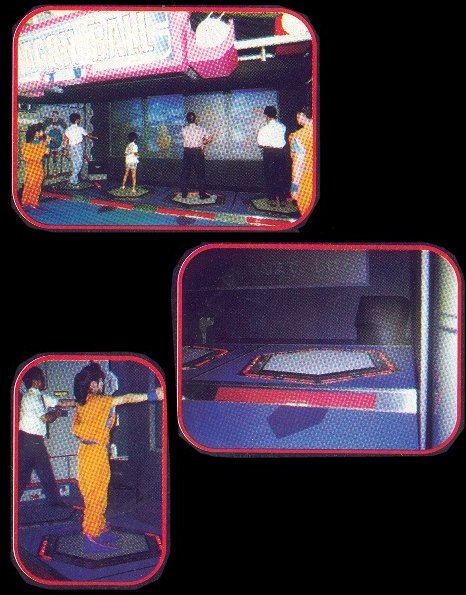Overview
The Sega Activator is an octogon-shaped ring that was placed on the floor and plugged into the Genesis controller port. The product was based on the Light Harp invented by martial artist and musician, Assaf Gurner, and produced by Sega and Interactive Light. It was the first full-body motion controller, more than a decade before the Wiimote or Kinect.
The player would stand in the middle of the ring, which emitted infrared light beams directly up, and sensed their reflections back from the ceiling. The player's movements over each section would break the beamsand trigger some form of in-game action. Beams could be broken high (hands) or low (feet), producing sixteen distinct inputs.
Sega Mega Drive / Genesis

Marketing implied the Activator was similar to a free-range motion-capture device, with commercials showing players performing martial arts moves in the ring and seeing them translated in-game. However, the system was actually designed only for the player to make specific movements that were analogous to buttons pressed on a controller (e.g. wave hand over the section mapped to the "A" button to perform that action). The mechanics are naturally similar to the original Light Harp's mapping of specific sections to notes, or keys on a keyboard. The player was free to punch and kick, but it would only correctly register if they did so over the right beam.
The Activator could work with any Genesis game by emulating a 3-button pad. The user would assign buttons to each of the eight sections, including direction pad up, down, left, and right. Additionally, combination moves (pressing two buttons at once by breaking two beams at once) were not supported. Only three games were specifically programmed to recognize the Activator's full range of inputs: Eternal Champions, Mortal Kombat, and Comix Zone.
Vaulted or mirrored ceilings interrupted the IR beams' reflections, along with irregular roof beams, ceiling fans, or similar obstructions. The Activator also required its own standalone power supply (another 9V brick; typical of Sega's consoles of the time), and retailed for $80. High cost, lack of support, and restrictive gameplay all contributed to the controller being quietly discontinued.
Dragon Ball Z VRVS

Sega used the technology in a much more effective manner for the arcade fighting game Dragon Ball Z: VRVS.
Unlike the console peripheral, this Dragon Ball Z game used extra sensors for better reaction detection, so that the player's movements match the on-screen actions, making it the first successful example of full-body motion sensing.
See Also
Log in to comment